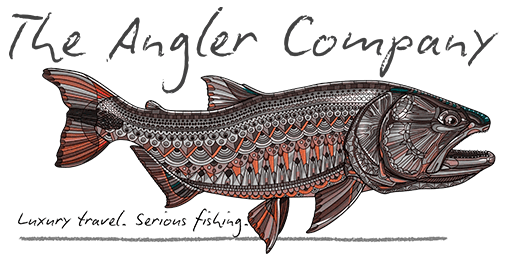Golden Dorado Fishing Argentina
Complete Guide to the River Tiger
Known as “El Tigre del Río”, the Salminus brasiliensis is the apex predator and one of the most sought after gamefish in the world.
Known as "El Tigre del Río" (The River Tiger)
Known as “El Tigre del Río” (The River Tiger), the Salminus brasiliensis is the apex predator and one of the most sought after gamefish in the world. For serious anglers, a fishing trip to South America, especially Argentina, in pursuit of this species is a holy grail. This fish is a beauty, with a head of burnished gold and powerful jaws. But confusion with other unrelated marine fish often clouds its identity. This is not the oceanic mahi-mahi or any saltwater fish; Salminus brasiliensis is a freshwater characin. This guide will cover everything you need to know about this incredible species, from its biology to the field-proven knowledge for a successful fishing trip.
Golden Dorado
Quick facts
View all the details
| Attribute | Data |
|---|---|
| Scientific Name | Salminus brasiliensis (Cuvier, 1816) |
| Common Names | Dorado (Spanish), Dourado, River Tiger |
| Native Range | Argentina, Bolivia, Brazil, Paraguay, Uruguay |
| Top Destinations | Corrientes Province, Argentina |
| Alternative Regions | Bolivia (remote), Uruguay (restricted access) |
| Typical Size | 3–10 kg (7–22 lbs) |
| Maximum Size | 34 kg (75 lbs) and 1.3 m (51 in) |
| IGFA World Record | 25.29 kg (55 lbs 11 oz) – Complete size guide |
| Best Season | Oct-Dec & Mar-May (Argentina) |
| Lifespan | Can live up to 15 years |
| Conservation Status | Least Concern (Global); Threatened (Local) |
Apex Predator Anatomy
Biology and Description
The dorado’s body is a reflection of its life as a fast moving predator. Its torpedo shaped body is hydrodynamic for life in fast currents. The most striking feature is its large head with powerful jaws and sharp teeth to grasp prey.
The diet of this species changes dramatically with age; juveniles feed on aquatic insects and smaller prey before graduating to a diet almost exclusively of fish.
It has a golden yellow body with dark spots on each scale forming longitudinal stripes. Females are much larger than males, a classic example of sexual dimorphism. Juveniles are more silver and can be mistaken for other native species.
South American Waters
Habitat, Migration, and Life Cycle
The golden dorado is native to the major subtropical river systems of South America, with populations distributed across Argentina, Bolivia, Brazil, Paraguay, and Uruguay. While populations exist across five countries, Argentina’s conservation efforts have created the most stable and accessible fisheries, particularly in the Paraná system centered in Corrientes Province.
This species thrives in warm, moving water, using rapids, confluences and submerged logs as ambush points. Its life cycle is tied to the river’s seasonal flood pulse and the massive migration of its main food source, the streaked prochilod (Prochilodus lineatus), known locally as the sábalo. In spring and summer (October-January) rising water temperatures trigger the “Piracema”, a mass upstream spawning migration that can cover hundreds of kilometers. The Paraná River through Corrientes serves as the primary corridor for these migrations, creating unmatched fishing opportunities.
The Best Location
Choosing Your Golden Dorado Destination
Argentina - The Proven Choice
With three decades of organized sport fishing, Argentina has refined the golden dorado experience. The Paraná River system, particularly in Corrientes Province, combines the highest fish density with professional infrastructure. Unlike other destinations still developing their fisheries, Argentina offers predictable results backed by conservation practices that ensure sustainable populations.
The numbers speak for themselves: over 80% of international dorado anglers choose Argentina, with Corrientes hosting the majority due to its unique position where the Paraná meets the Iberá Wetlands.
Regional Considerations
Some anglers consider Bolivia’s jungle rivers, but should understand the reality: 2-3 days of travel for 3-4 days of actual fishing, no infrastructure if weather changes, and smaller average fish. Uruguay’s Salto Grande produces giants but in an industrial dam setting with access limited to 8-10 boats total. For consistent action with comfort, Argentina remains unmatched.
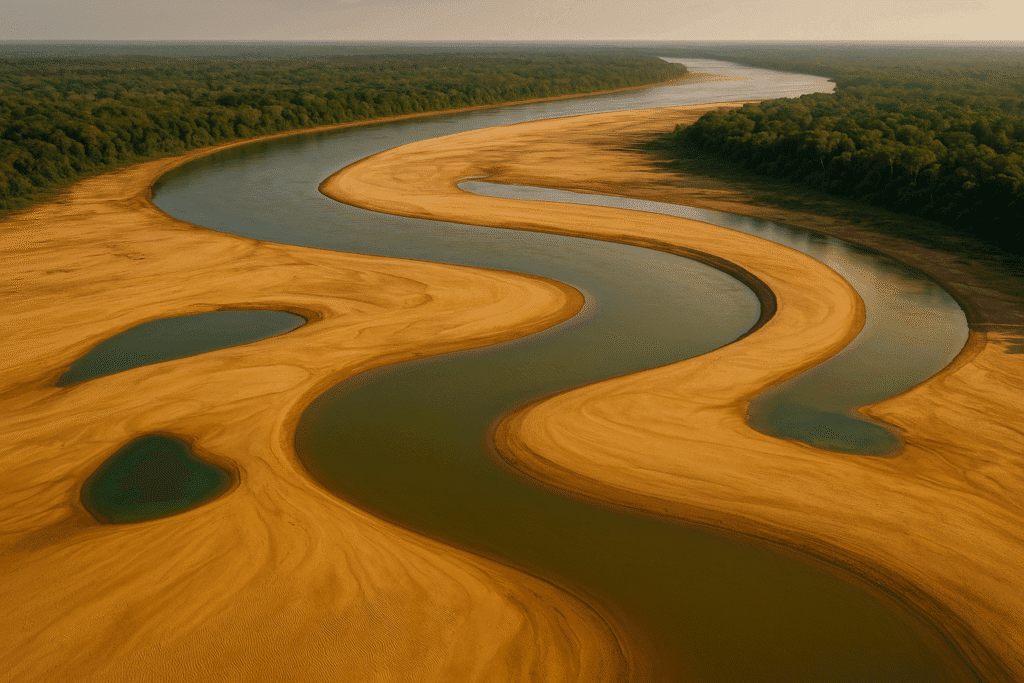
Why Corrientes Province Leads Argentina's Dorado Fishing
Within Argentina, Corrientes has emerged as the undisputed golden dorado capital.
Here’s what sets it apart:
Strategic Location
Where the massive Paraná River meets the pristine Iberá Wetlands, creating diverse fishing opportunities within a single trip.
Fish Density
Migration patterns funnel dorado through Corrientes, creating the highest concentrations in South America.
Year-Round Access
While other regions have limited seasons, Corrientes' diverse waters provide excellent fishing from September through May.
Proven Results
Lodges in Corrientes maintain a 90%+ success rate for anglers landing multiple dorado per day during peak season.
Peak Fighting Season
Best Time to Plan Your Trip
The dorado’s raw power and fighting ability make it a legendary gamefish.
A successful trip requires a mix of saltwater power and freshwater precision. Anglers from around the world travel to these waters to catch this tough fish.
Timing is the most critical factor for catching dorado. The peak season in Argentina:
Jul
Aug
Sept
Oct
Nov
Dec
Jan
Feb
Mar
Apr
May
Jun
Unparalleled Opportunities
Why Choose Argentina for Your Golden Dorado Adventure
After decades of development, Argentina has perfected the golden dorado experience in ways other countries simply haven’t matched.
While Bolivia requires exhausting jungle expeditions and Uruguay restricts you to one dam spillway, Argentina offers immediate access to diverse waters. You can fish massive rivers one day and crystal-clear wetlands the next—all within easy reach of comfortable lodges.
Argentina pioneered conservation with the 2005 law declaring dorado a fish of national interest, establishing sustainable catch-and-release practices now standard among professional guides. This conservation ethic, combined with diverse fishing environments and world-class hospitality, creates an unmatched experience. When you add legendary beef, Malbec wines, and options like dove hunting, the choice becomes clear.
Professional Grade Gear
Essential Gear for Fly Fishing
The ideal setup is a robust hybrid system that borrows from saltwater tackle design.
Fly Fishing Gear
For fly fishing a 9-foot, fast-action 8 or 9-weight saltwater rod is the norm. This will give you the power to cast big flies and handle a trophy fish. It must be paired with a high-quality, large-arbor reel with a sealed drag system. A tropical, weight-forward floating fly line is required, along with an intermediate or sink-tip line for sub-surface presentations. A wire bite tippet (steel or titanium) of 30-40lb test is non-negotiable; without it you will miss the fish.
Quick List
- 9-foot, fast-action 8 or 9-weight saltwater rod
- High-quality, large-arbor reel with sealed drag
- Tropical, weight-forward floating fly line
- Wire bite tippet (30-40lb test) - non-negotiable!
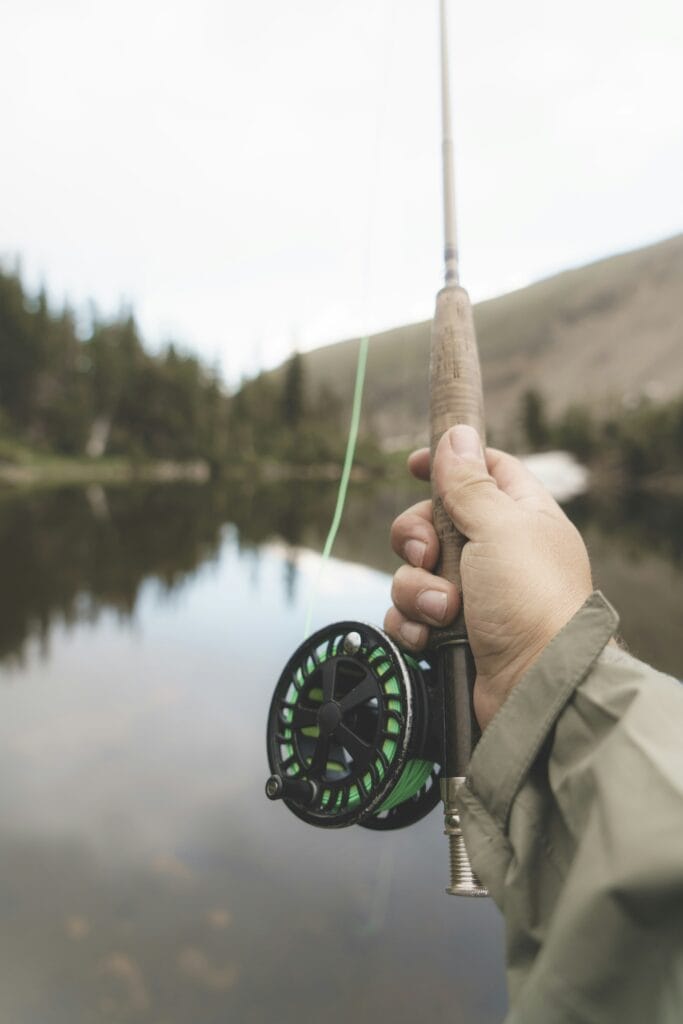
Spinning & Baitcasting Gear
A medium-heavy action rod (6-7 feet) is needed to drive large hooks home. This should be paired with a robust reel spooled with 50-60lb braid. The zero-stretch braid is crucial for a powerful hookset into the fish’s bony mouth. This system must be finished with a heavy monofilament leader for shock absorption and a mandatory wire bite leader.
Quick List
- Medium-heavy action rod (6-7 feet)
- Robust reel with 50-60lb braid
- Heavy monofilament leader for shock absorption
- Mandatory wire bite leader
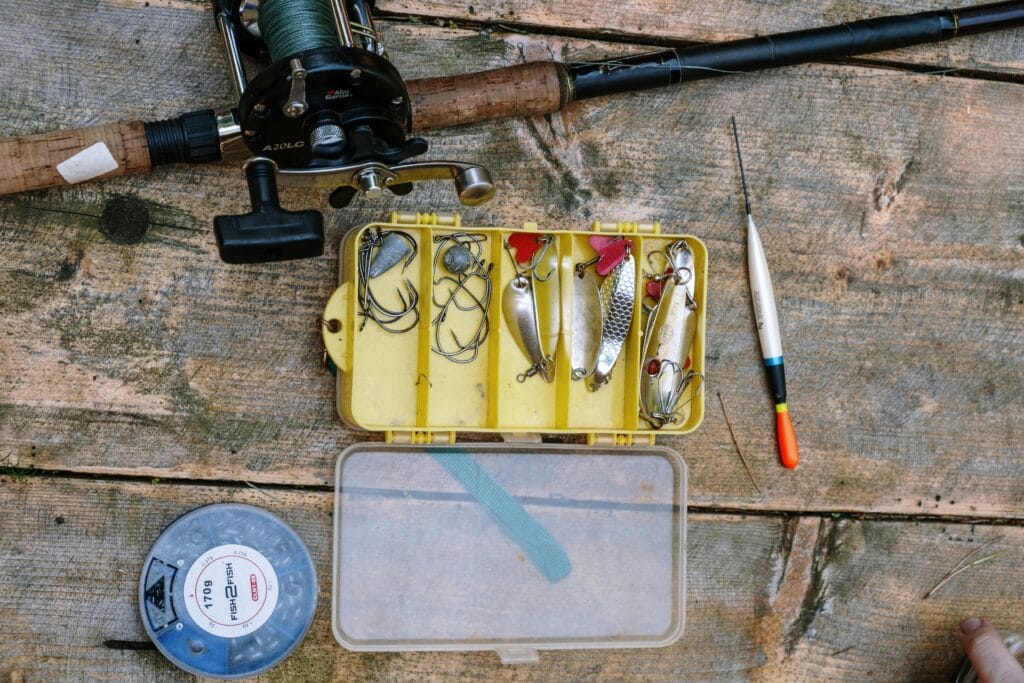
Big Profile Selections
Top Flies and Lures
Selection is based on profile, movement and durability. The most effective flies and lures are large, typically 4-7 inches, to mimic the dorado’s natural prey.
Top Flies
An angler’s fly box should be full of options. The Andino Deceiver is the ultimate streamer. Other essentials include durable Synthetic Streamers, buoyant Mouse Patterns for topwater and noisy Poppers/Sliders. Dark colors like black and purple are most effective as they create a strong silhouette in stained water.
Effective Lures
Hard-plastic subsurface and surface lures are proven producers. Key models include the Rapala X-Rap and Super Shad Rap, and the Yo-Zuri Crystal Minnow. Many experienced anglers also find success with a lure that imitates the movement of smaller prey fish.
Pro Guide Secrets
Proven Techniques for Catching Dorado
The techniques are a direct import from saltwater fly fishing methods.
The Strip-Set
The most common mistake is the “trout set” (lifting the rod). The fish’s mouth is incredibly hard; you must use a strip-set. Keep the rod tip low and upon feeling the strike pull back hard and aggressively on the line with your stripping hand to drive the hook home.
“Bow to the King”
When they jump, lower the rod and point it at the fish. This “bowing” motion creates slack, preventing the fish from using the line’s tension to throw the hook.
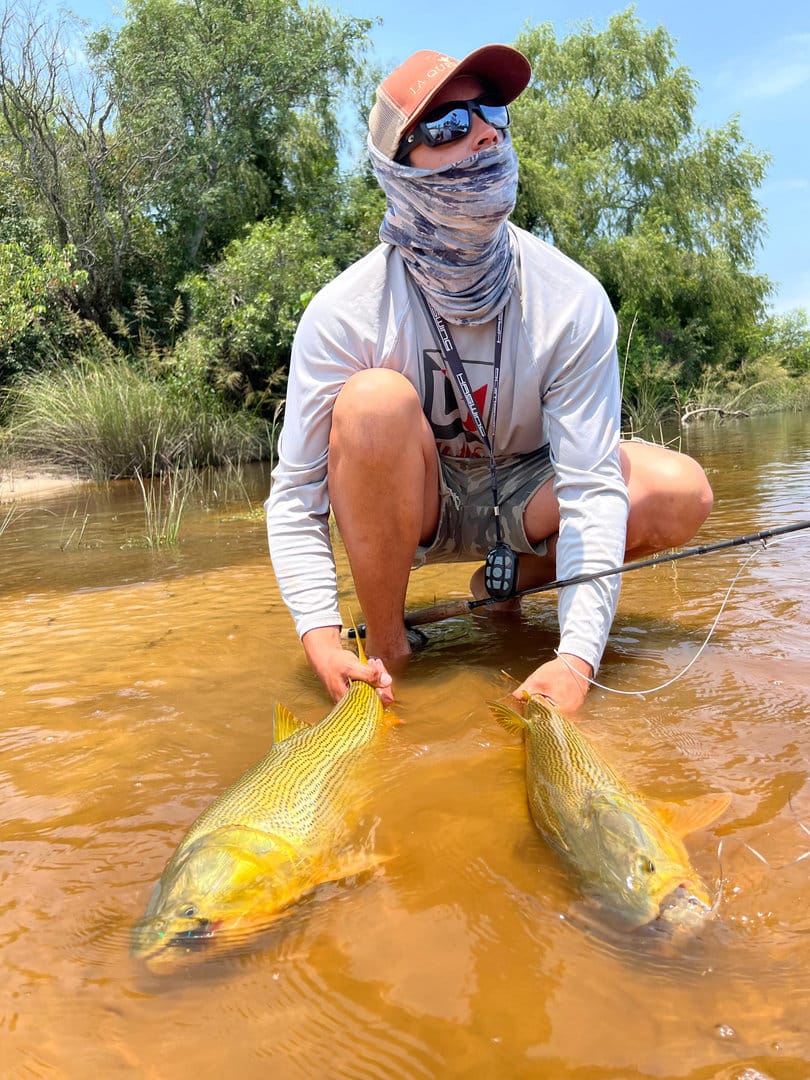
The Angler Company
Planning Your Fishing Experience
Fishing in Argentina is about more than just catching fish. It’s about immersing yourself in the culture and nature, enjoying world-class hospitality and creating memories that last a lifetime. From the moment you arrive until you depart every detail is taken care of to maximize your time on the water. The connection between angler and environment is what makes this experience truly special.
Over 500 anglers from 30+ countries have discovered why Corrientes is special. With 90% of our guests being referrals or returns, the results speak for themselves.
Catch & Release Ethics
Conservation Status and Threats
The species is listed as “Least Concern” globally due to its wide range. However, many local populations are severely threatened by dams, overfishing and habitat degradation. Catch-and-release is the universal standard among reputable guides.
Conservation Partnership
Supporting Sustainable Fishing
When you fish with responsible operators in Argentina you are contributing to conservation efforts that will protect this species for future generations. Our commitment to catch-and-release, habitat preservation and local community engagement ensures the thrill will be around for years to come.
Frequently Asked Questions (FAQ)
Is this the same fish as mahi-mahi or salmon?
No. This is a freshwater fish from the characin family. It’s not related to the saltwater mahi-mahi and is not a type of salmon.
Why is Argentina, specifically Corrientes, the top destination?
Corrientes combines the highest fish density in South America with world-class infrastructure. The convergence of the Paraná River and Iberá Wetlands creates unique conditions found nowhere else. Add professional guides, conservation practices, and easy access from Buenos Aires, and you have the perfect formula.
What do they eat?
Their diet changes with age. Juveniles eat insects and crustaceans, adults are fish-eaters. Their main food source is the migratory sábalo (Prochilodus lineatus) but they are opportunistic and will eat any suitable prey.
When should I book my trip?
October-December and March-May are prime months in Corrientes. Book 6-8 months in advance for peak season dates at premier lodges. Avoid January-February due to extreme heat.
Can I catch multiple dorado in one day?
Yes, especially during peak season when they are feeding. Some anglers catch multiple dorado during prime conditions, especially in areas with healthy populations.
Do I need experience to fish for them?
While experience helps, lodges in Corrientes cater to all skill levels. Professional guides will teach you the necessary techniques, including the critical strip-set and how to fight these acrobatic fish.
What makes Corrientes different from other regions in Argentina?
Corrientes hosts 70% of Argentina’s dorado lodges for good reason. The unique geography where the Paraná meets the Iberá creates both river and wetland fishing in one location. Fish density is highest here due to migration patterns, and the infrastructure is unmatched.
Can I combine dorado fishing with other activities?
Absolutely. Argentina, particularly Corrientes, excels at combination trips. Dove hunting is exceptional (Cast & Blast packages), plus you can add wine tours, gaucho experiences, and more. Many lodges offer non-angling activities for companions.
What about weather and conditions?
Corrientes enjoys more stable weather than mountain regions. While Bolivia’s rivers can become unfishable with rain and Uruguay depends entirely on dam operations, Corrientes offers consistent conditions with multiple backup options if weather changes.
The Angler Company
Ready to Experience the Ultimate Golden Dorado Fishing?
Fishing in Argentina’s pristine waters with expert guides, exclusive access and unforgettable memories.
Confronting this apex predator is a serious angling challenge that requires preparation, respect and technique. The path to success is understanding its habitat, its power and the conservation ethic to protect its future. To fish for this species in its native environment is to go on an exciting journey into the heart of South America’s rivers.
